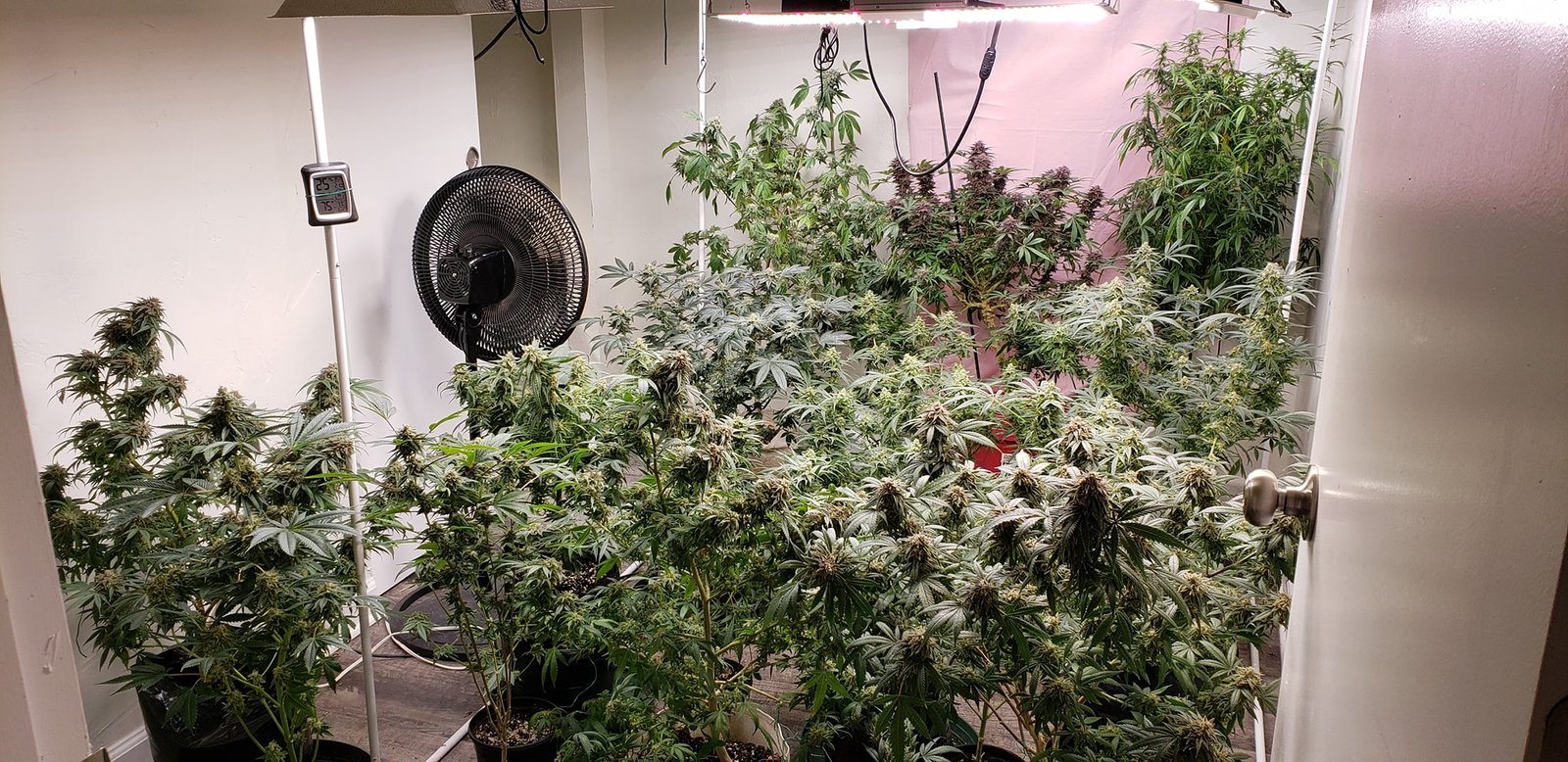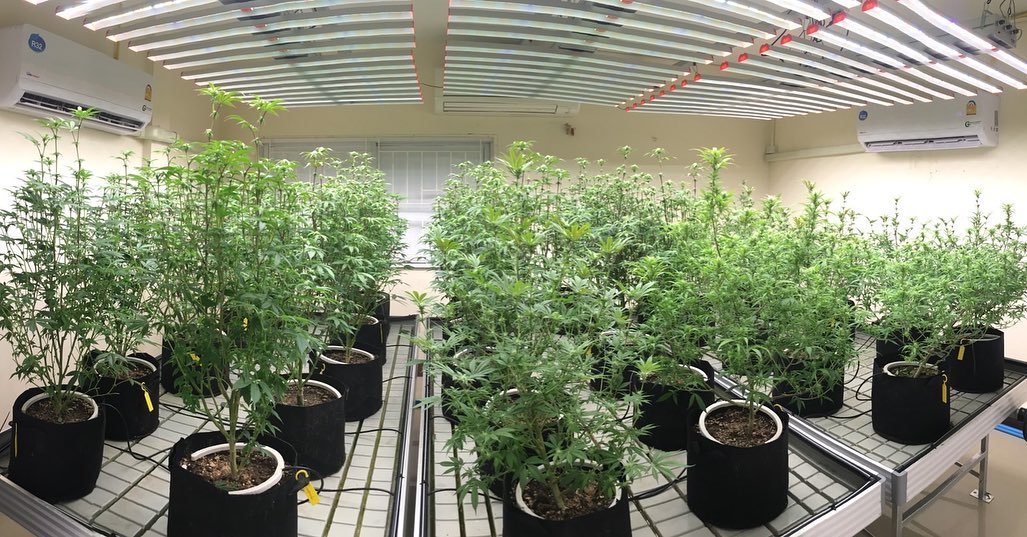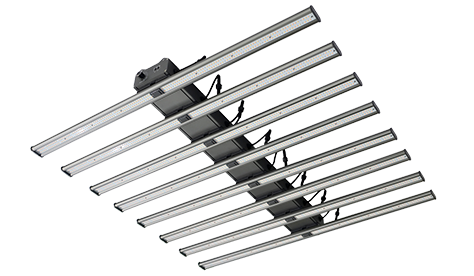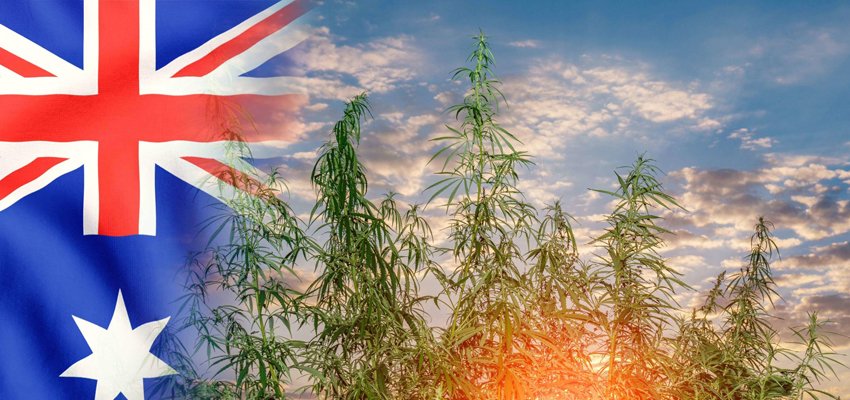Table of Contents
Have you ever tried putting your hand right under a grow light for about 3 seconds and will notice a heat sensation on the back of your hand?
Yes, every light generates heat, whether it’s LED, HPS, or MH. It’s just that different types of grow lights have different heat production capabilities.
Many indoor gardeners are curious about the relationship between grow lights and heat.
In this article, we will explore the question of do grow lights produce heat in detail and provide you with insight into the relationship between grow lights and heat.
Do Grow Lights Get Hot?
How Does the Plant Light Generate Heat?
Plant grow lights, used for indoor gardening, generate heat through the process of converting electrical energy into light energy. This process is called “electroluminescence”.
Let’s first look at how do grow lights produce heat. When an electric current flows through the circuit of a LED grow light, it excites the electrons in the light-emitting diode (LED), causing it to release energy in the form of photons. A photon is a unit of light.
However, not all of the electrical energy is converted into light energy. Some of it is converted into heat energy, which is why grow lights can generate heat. This process produces a certain amount of heat as a by-product, just like your computer or cell phone charger gets hot after being plugged in for a while.
What about High Intensity Discharge (HID) plant bulbs? This bulb contains a gas that is excited by an electric current. This excitation causes the gas to emit light, but it also generates heat due to the resistance of the gas to the current. This heat is then emitted from the bulb, affecting the overall temperature of the environment.
In addition, there are some plant lights that may also contain ballasts. Ballasts can also generate heat because they convert the incoming current to the proper level needed to power the bulb.
Overall, the heat generated by plant lights is a natural by-product of the process of producing the light needed for plant growth.
The Impact of Heat on Plant Growth
And now, we’re going to talk about the importance of heat for plants, and we’ll start with a simple example.
Imagine you are trying to grow a tomato plant in your grow room. You’ve picked the perfect spot near a window with plenty of indirect sunlight and water regularly.
But there’s a problem. In the cold winter, the temperature indoors and out is so low that tomato plants can’t thrive. You might try wrapping the plant in a warm blanket, but that won’t do much. What you need to do is use a light bulb to keep plants warm and provide some heat to make the tomato plants grow.
Why is heat so important for plant growth? Do grow lights keep plants warm? Just like us, plants need energy to grow, and that comes from the sun. But if the temperature is too low, the chemical reactions that drive plant growth slow down and the plant can’t produce as much energy.
Do you know the secret to the raw juicy deliciousness of tomato plants? Yes, energy. You need to give it some heat, but not too much.
Excessive heat can be detrimental to their growth and development. High temperatures can cause plants to wilt, dry out, or even die. High temperatures may also increase the risk of pests and diseases, which can further damage plant growth.
The Pros and Cons of Different Types of Heat Performance of Grow Lights
We mentioned above how plant lights produce heat. Then, we will then discuss the pros and cons of each type of grow light from a thermal perspective.
HPS Grow Lights
High pressure sodium grow lights were an early and popular choice for indoor gardening due to their efficiency, durability and cost-effectiveness.
Pros
- Efficient: HPS grow lights are known for their high efficiency, which means they produce a lot of light for the amount of energy they consume. A 1,000-watt HPS grow light can produce up to 150,000 lumens of light while only producing about 3,400 BTUs of heat per hour.
- Lifespan: A typical HPS grow light lasts 24,000 hours, while a typical metal halide grow light lasts only 10,000 hours.
- Red light spectrum: HPS grow lights emit a red-light spectrum, which is ideal for flowering and fruiting plants. This is beneficial from a thermal standpoint. This means they produce less heat than other types of grow lights that emit a broader spectrum.
Cons
- Heat production: The accumulation of heat can be a problem. It may be a problem in hot climates or in small growing spaces. A 1000 watt HPS grow light can raise the temperature of a 10′ x 10′ grow space by 10-15 degrees Fahrenheit.
- Limited spectrum: The HPS grow light emits a narrow spectrum of light, which may not be suitable for all types of plants. It may be necessary to use additional light sources to provide the necessary spectrum for plants, such as LED grow lights, to provide a broader spectrum.
- Energy consumption: HPS grow lights consume a lot of energy, which can lead to high electricity bills. A 1000 watt HPS grow light can consume 1.0 kWh of energy per hour, which equates to approximately 3,400 BTUs of heat per hour.

LED Grow Lights
LED grow lights are a popular choice for indoor plant cultivation because of their high energy efficiency, long life and customizable spectrum. However, they also generate heat. Let’s take a look at the pros and cons of LED grow lights when it comes to heat.
Pros
- Energy efficiency: LED grow lights consume less energy than high-pressure sodium (HPS) or metal halide (MH) lamps, generating less heat and reducing the need for cooling systems.
- Lower heat output: LED grow lights produce less heat than conventional lighting systems, which reduces the risk of overheating and damaging plants. This is especially important in indoor growing environments where temperature control is critical.
- Longer life: LED grow lights last longer than conventional lighting systems, which means they don’t need to be replaced as often. This not only saves money but also reduces waste and the environmental impact of discarded bulbs.
- Heat management: Some researchers have found that LED grow lights with larger heat sinks and more efficient fans generate less heat and maintain more consistent temperatures within the grow space.
Cons
- Heat Concentration: Some plant lights have an unfriendly lamp bead layout design that can lead to hot spots and uneven temperatures in the growing environment, which can burn your plants.
- Heat buildup: In some cases, the heat generated by LED grow lights may exceed the cooling capacity of the built-in heat sink and fan. This can lead to heat buildup in the growing space, which can stress plants and reduce yields.
MH Grow Lights
MH (metal halide) grow lights are commonly used for indoor gardening. When considering their thermal performance, there are advantages and disadvantages to using MH grow lights.
Pros
- High light efficiency: MH grow lights have high light efficiency and they are able to convert more energy input into light output.
- Good heat dissipation: MH grow lights generally dissipate heat well, which helps reduce heat buildup in the growing area and prevents damage to plants due to excessive heat.
- Durable: With durable properties, they can be used for a long time, reducing the need for frequent replacement. It can save money in the long run.
Cons
- High Heat Output: A 400 watt MH grow light can produce up to 1450 BTUs (British Thermal Units) of heat per hour. That means that if you have several MH grow lights in a small growing area, the heat output will increase very quickly. The plants will feel very hot and hotter.
- Limited efficiency: The optimal operating temperature range for MH grow lights is 65-75°F (18-24°C). If the temperature exceeds this range, the efficiency of the grow lamp may drop by up to 15%, which may result in reduced light output and reduced energy savings.
- High energy consumption: Although MH grow lights are usually cheaper than other types of lamps, they still consume a lot of energy. A 400 watt MH grow light can consume up to 2.2 kilowatt hours (kWh) of electricity per day. If your grow light works 12 hours a day, you can expect to pay an additional $15-$20 a month for electricity.
Do LED Grow Lights Get as Hot as HPS Grow Lights?
No, LED grow lights are not as hot as HPS grow lights.
HPS lamps generate a lot of heat as a by-product of the energy they consume. In contrast, LED lights convert most of the energy they consume into light and produce very little heat.
The heat generated by HPS lights can be beneficial in certain situations. In winter, for example, it can help keep planting areas warm. Just too much heat can also be harmful to plants and can lead to problems such as heat stress, wilting and reduced growth rates.
In addition, the heat generated by HPS lamps may require additional cooling equipment and increase energy consumption.
LED grow lights generate very little heat and can be placed closer to the plants without the risk of heat damage. This allows for more efficient use of space and energy and also reduces the need for additional cooling equipment.
In addition to the heat comparison, if you’d like to learn more about what the differences are between LEDs and HPS, check out our article.
Is A Heat Lamp the Same as A Grow Light?
No, heat lamps are not the same as grow lights. And the heat lamps not the indoor heat lamp for plants.
As if many novice gardeners are asking whether ordinary LED lights can help plants grow. By the same token, although both heat lamps and grow lights emit light and heat, they have different uses.
A heat lamp is primarily used to provide heat to an area or object. It produces infrared radiation, which can be felt as heat and is often used to keep animals warm or to provide heat in a bathroom or outdoor patio.
Although I mentioned above that plants need energy and heat to get through the winter. But please dismiss the idea of using a heat lamp because it will burn your plants out.
Grow lights are specifically designed to support plant growth by providing the spectrum needed for photosynthesis. Grow lights emit light in the specific wavelength range needed for plant growth and development and are often used to supplement natural light in indoor gardening setups.
Therefore, while both types of lights emit heat and light, a heat lamp is not suitable for growing plants because it does not provide the correct spectrum needed for photosynthesis.
Factors Affecting the Heat Production of Grow Lights
Many people will ask how much heat do grow lights generate. Unfortunately, it is not possible to give you a precise numerical standard. This is because the amount of heat generated by the grow light depends on various factors.
The type and wattage of the grow light, the intensity of the light, the size of the grow space, and the temperature of the environment all affect the heat of the plant light
As an example, HID grow lights tend to generate more heat than LED grow lights. Similarly, a 1000 watt grow light will produce more heat than a 600 watt grow light.
Plus, let’s say you have a small grow tent with a 1,000-watt grow light. When the light works, it generates a lot of heat. As you know, the LED grow room temperature increases.
Under the assumption of a hot summer, the ambient temperature outside the tent is also high, which can lead to higher temperatures inside the tent.
It follows that an overheated environment can also harm your plants. It’s a cycle.
Tips for Managing Heat Generated by Grow Lights
We have now established that grow lights do generate heat, as well as learned how too much or too little heat can affect plant growth. It is important that we know how to effectively manage the heat to ensure plant health and growth.
In this section, we will provide you with some tips for managing the heat generated by the grow lights.
Use Fans or Air Conditioners for Air Circulation
One of the most effective ways to manage the heat generated by grow lights is to use fans for air circulation.
Fans help move hot air away from the grow area and bring in fresh, cool air. Air conditioning helps regulate the temperature and prevents heat buildup that can lead to plant damage from overheating.
Choose the Right LED Grow Light
LED grow lights are an ideal choice if you want to minimize the amount of heat generated by your grow lights. LED grow lights tend to produce less heat compared to HPS grow lights. In the long run, they are a more energy-efficient and cost-effective option.
Maintain Distance Between Plants and Plant Lights
It is important to maintain adequate distance between plants and grow lights as the best way to prevent plants from being burned by excessive heat.
There are many growers who have also had failed experiences with plant burns and concluded that they did not maintain a safe distance between the plants and the grow lights.
Determine the Temperature and Humidity of the Grow Room
Temperature
The temperature of the grow room can also have a significant impact on the heat generated by the grow lights. It is important to keep the temperature of the grow room within a specific range to prevent heat buildup.
In general, the ideal temperature range for indoor plants is 65-75°F (18-24°C).
Humidity
It is important to maintain adequate humidity levels in the grow room to prevent heat-related problems. High humidity levels can lead to heat buildup, while low humidity levels can cause plants to dry out.
Summing Up
Do grow lights produce heat? You know the answer as well as the amount of heat generated depends on a variety of factors.
To manage heat effectively, it is important to use fans for air circulation, choose LED grow lights, keep sufficient distance between plants and grow lights, and consider the temperature and humidity of the grow room.
By following these tips, your indoor plants get a better chance of being able to grow healthily.
Hoping this article has cleared up any confusion you may have had about the relationship between plant lights and heat.
Jayes
As a Digital Marketing Manager at AUXGROW, Jayes combines a passion for hydroponic systems and expertise in LED grow lights. With hands-on experience and a deep understanding, Jayes guides you through the world of sustainable cultivation.






